LR2.1 Localized Editing, DPRK

|
• Deira Park Hotel • Khalidia Hotel Apartments • Le Meridien Residence Baniyas Square • Traders Hotel Dubai |
Feature Photograph

This weeks feature photograph was captured in Ang Thong a few months back. I sat there for a few hours watching the workers in the rice fields and hoping for some ideal light and the perfect expression. After a while I realized the light wasn’t going to come that day so I’d need to use another technique to get the image I desired.
This image is significant because of the software package I used to create it. Adobe’s Lightroom 2.1 boasts a new feature called Localized Editing. The ability to isolate part of the image, while still in the raw converter, and individually adjust the parameters of the part of the image selected. This is hugely significant because it’s very easy to do, and the only way to do this before was using multiple layers in Photoshop which was a far more complicated process. By adjusting the raw file you get less image degradation and subsequently higher image quality. We’ll discuss how this was done and show some samples below as this weeks learning topic.
Weekly Photo Outing
As promised in last weeks Readers Photo Submissions I’d like to introduce Akulka and welcome his excellent contribution to this weeks column. He gives us a rare glimpse into the Democratic Peoples Republic of Korea during a rare visit. The follow up piece will run in next weeks column followed by several more in-depth submissions in the Stickman Bangkok Readers Submissions area. I’m looking forward to them! You can reach Akulka for questions and kudos at the following email address: argonaut942@gmail.com
At the end of September I had the rare opportunity to visit a nation distinctively different to any other on this planet, the Democratic People’s Republic of Korea (DPRK), commonly referred to as North Korea. Undoubtedly the highlight of my journey was my chance to see not only one, but two of the famed Mass Games, the “Grand Mass Gymnastic and Artistic Performance” the North Koreans have become experts in staging. To my mind they have rightly been called the most incredible shows on earth, with its thousands upon thousands of artists, gymnasts, acrobats, martial artists, and children on stage, performing incredible feats of showmanship perfectly in sync with each other and the music. The shows tell the compact story of the DPRK in dance, folk songs, and giddying acrobatics. They are practiced for months and performed in front of millions, making it a truly national event. The greater significance of the shows is about teaching the collective, and the discipline and surrender to it that the governance requires.
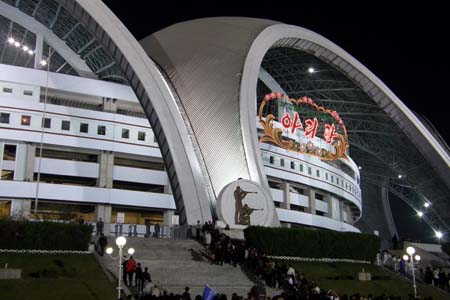
Both shows I attended were performed in Pyongyang’s massive May Day Stadium, the largest in the world with its standard seating capacity of 150,000.
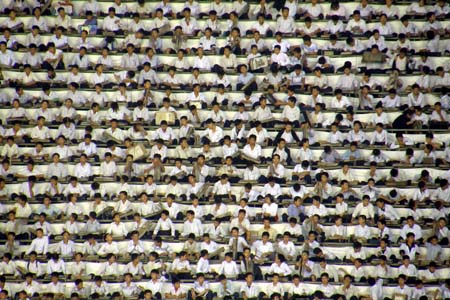
In the backdrop, on the far ranks opposing the spectators, 20,000 students hold large colored cards forming gigantic animated murals depicting scenes corresponding to the themes presented on the main show floor. The transitions are always perfectly fluent and concise.
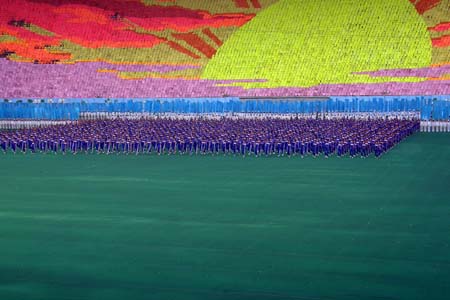
A couple of thousand male performers dressed in blue jump suits march on stage to perform perfectly synchronized gymnastics against the backdrop of the rising sun.
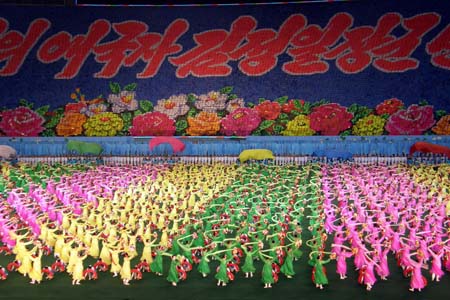
Women dressed in colorful robes twirl to the music.
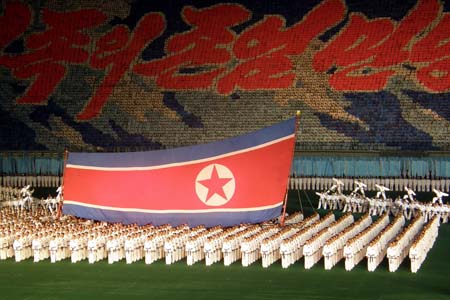
The beginning of the TaeKwonDo presentation, showing off Korea’s original martial art and national sport.
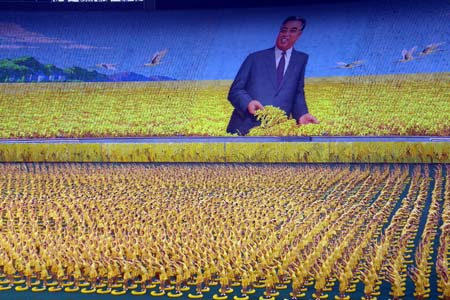
Thousands of people dressed in yellow robes depicting a grainfield swaying in the wind in against a backdrop showing the “Great Leader” and “Eternal President” (passed away in 1994) Kim Il Sung
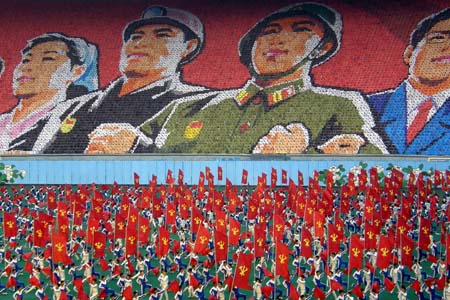
Building the foundation of a strong and proud nation: The peasant, the worker, the soldier, and the intellectual.
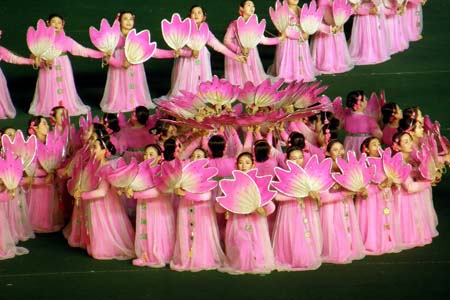
A group of female performers building one of dozens symbolic formations on stage.
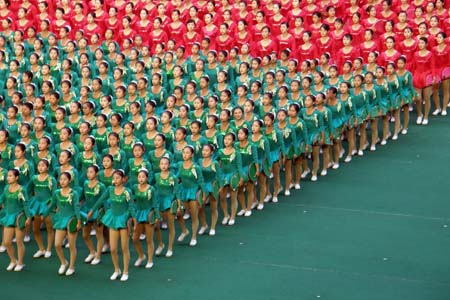
After 90 minutes of show time it’s time to wave goodbye.
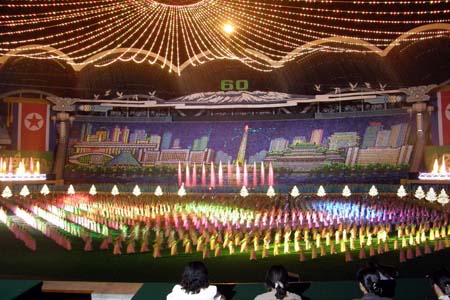
The final moments of the show.
Adobe Lightroom 2.1, Localized Editing
In the past the only way to properly adjust different parts of an image was through the use of layers in Photoshop. The process is a bit complicated and time consuming and many photographers feel it’s not worth the trouble. A few months back Adobe came out with their new release of Lightroom 2.0 and changed the way we do such things forever.
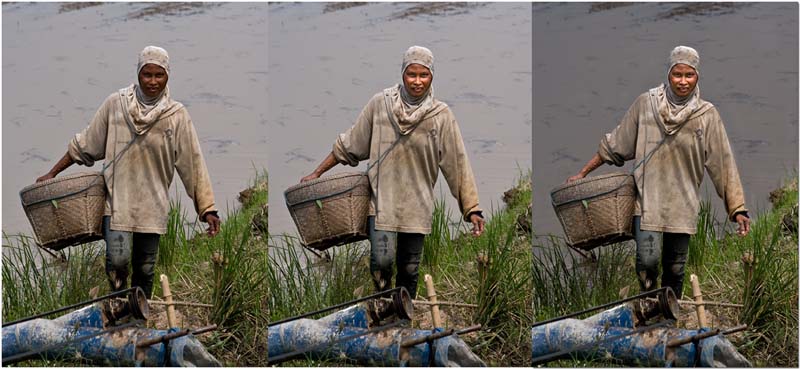
First frame: The first shot in this image block shows an out of the camera sample of what you get without Lighroom. Notice how dark her face? If I’d have upped exposure to properly expose her face the water behind her would have been blown out and the frock she was wearing would be overexposed. More I wanted her to stand out from the background and foreground and the natural light just wasn’t going to allow my vision. The exposure in this first frame was the best compromise using available light.
Second frame: I’ve brought the file up inside Adobe Lightroom 2.1 and have selected the “adjustment brush” in the develop module which activates our localized editing. Making sure “smart mask” is checked allows me to paint with my brush in the desired areas and not worry too much about painting over major line contrasts. In other words I was able to select the brush size and type, and then “paint” her face, hands, and arms and have the brush easily and almost automatically stay on the hands, face and arms without spilling over into the rest of the image. Once the areas are painted I fine tune the desired changes, in this case I brought up the exposure on her face almost a full stop, kept the color neutral, and added just a bit of sharpening to her face.
Third frame: Not satisfied with the second frame I opened a second “adjustment brush” area and painted the water behind her and brought it’s exposure down 1.3 stops. You can have as many adjustment brush areas as you want and can go back and forth between the designated areas to fine tune your adjustments. This is much easier and quicker than using layers in Photoshop.
Feature Image: The very last details of this image were done in Photoshop CS3 and include a fine level and sharpening adjustment, conversion from RGB Pro to SRGB for web view, conversion from 16 to 8 bits, and a saved in jpeg format with a health dose of compression to create a file size compatible with a fast loading web page.
Lightroom 2.1 is a very powerful and easy to use package. You can even make your own web galleries and even a web site using Lightroom. You can begin at a beginner stage and move into more advanced feature sets as you go. You’d be surprised how much quickly you can learn to use Lightroom 2.1 to an advanced level in a single day workshop. You could probably master Lightroom in a two day workshop. Compare that to spending months and months learning on your own, or a semester in a community college class.. and you still wouldn’t know all the tips and tricks a pro uses.. without a pro showing you.
Photography News of Interest
There’s another and Exhibit taking place from December 4-7th at the BITEC exhibition hall. You can call for more information at (66) 2-803-7570/1. This exhibit is being billed as “The Greatest International Photo Equipment Exhibition with the most Advanced Technologies in the World of Digital Photography.” See you there! Location map
Sometimes photographers get the rare privilege of being asked to photograph historical figures, and the even rarer privilege of having certain photographs become more famous over time. Cecil Stoughton might not be a household name, but he was the photographer on duty who captured the swearing in of Lyndon B. Johnson after President John F. Kennedy was assassinated. LBJ was sworn in aboard Air Force One. Cecil Stoughton died this week at age 88. You can read more about it here.
Readers Submissions
Hi Steve,
How’ve you been? As you may remember, you shot some pictures of my (now) wife and me for our wedding invitation about a year ago.
Just so you know, the wedding invites turned out great, and we got a lot of positive comments about the photo we put on there. Thanks again for that!
Although I’m not even considering myself an amateur photographer (I usually carry a point and shoot on my travels, but to say it’s a proper hobby is a bit of a stretch), but I’ve read your weekly submissions to Stick’s website, and I have to admit I find it very interesting. I don’t have the necessary cash at the moment to make it a hobby, but who knows, in the next few years I might just give it a shot and buy myself a DSLR. In the mean time I’ll continue to follow your column, and perhaps I can learn some things that are also useful for a point and shoot camera.
I’ve been living in Thailand for over 4 years in total now, and during this time I did take more than 1000 pictures while in Bangkok and while travelling. All point and shoot work mind you, but every once in a while you get a few nice ones in there that (in my opinion) are above average. I’d like to submit a few of these shots for your weekly, and I hope you find some of them worthwhile to post in your column.

Don’t think I need to explain where this was. A friend of mine actually came up with the idea to capture the reflection in the water. Was still very much oblivious to photography at the time. Taken in 2004.

A rice paddy while on a trek in Chiang Mai. 2004.

You mentioned Doi Suthep 2 weeks ago in your column, and that the view of Chiang Mai is supposedly very nice on a clear day. This is what I managed to get when I was there (2004).

This was in Khao Yai National Park, Thailand. While hiking through the park and we stumbled on this bush with loads of beautifully colored moths on them, just begging to be photographed (they didn’t even move!). I just love the colors on this one, and was surprised I could get this shot with a point and shoot (2005).
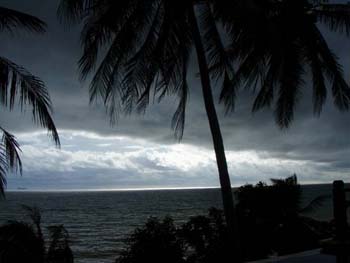
This was taken last week in Koh Lanta. It’s a little dark, but I really liked the lighting on the horizon (2008).
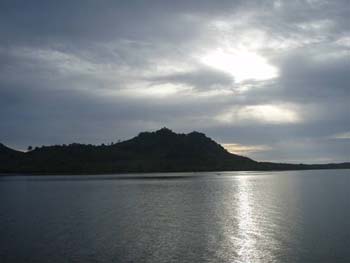
Also Koh Lanta, on one of the ferries back to Krabi. The reflection of the sun on the water really did look very nice. Not sure if the photo does it justice though… (2008).
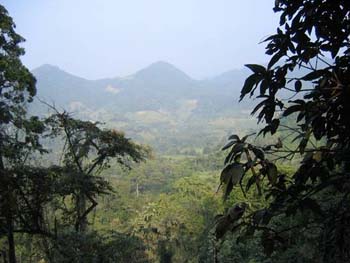
This was taken near Luang Prabang, Laos, from the top of that famous waterfall nearby (forgot its name). Taken in 2004.
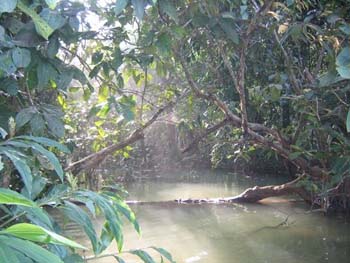
Same spot, but turned around 180 degrees and shot the source of the water (2004).
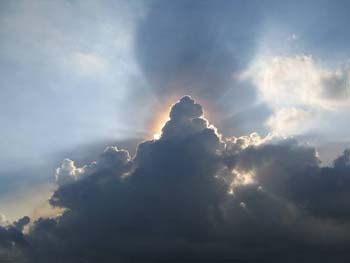
This was one of those lucky shots. Was sitting in my hotel room in Bangkok watching TV, looked outside and saw this light. Just HAD to take a shot, and I’m quite pleased with the result (2004).
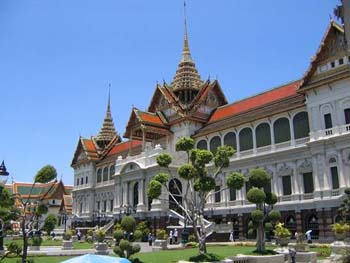
The royal palace in Bangkok (2004).
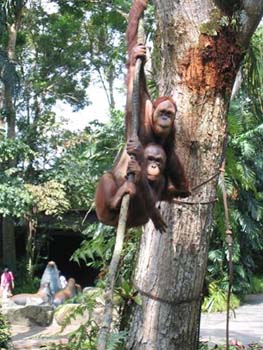
This was in Singapore Zoo. It’s slightly out of focus unfortunately, but you have to laugh at the way these to orangutans decided to pose for my camera! (2006)
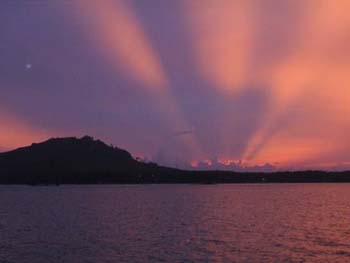
This was a sunset in one of the bays in Phuket, in 2006. It’s grainy, and probably not the greatest sunset ever photographed, but the colors are just stunning.
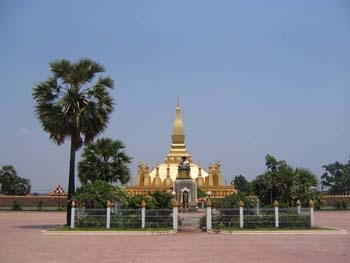
The golden chedi in Vientiane, Laos, on a clear day in 2006.
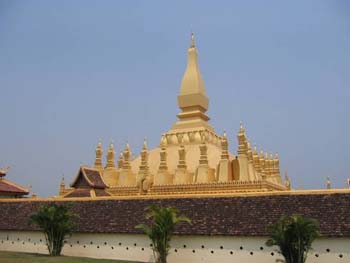
Same chedi, this time a little closer.
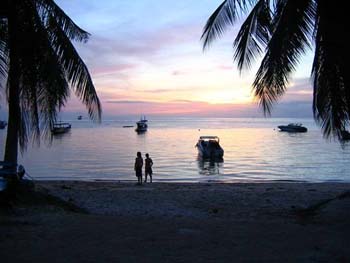
I do think this is my favorite picture from all these years. Taken on the beach at Koh Tao during sunset. It took me a few tries to get it focused with enough light, but the effect of the palm trees framing the shot, the 2 people taking a stroll, and the boats just floating leisurely in the water, was much better than I could’ve ever hoped for. I guess it was this particular shot that got me more interested in photography and how to compose a picture.
Maybe these are too many photos to put in your column, so feel free to pick and choose (if you want to run any of them that is :p). If you have any comments on any of them, feel free to let me know.
On a side note, if you would like, perhaps we could grab a few beers in Bangkok one of these days. Think it would be nice to meet up again.
With best regards,
Koen
Koen –
Thank you! I really enjoyed all of these. Yes, for sure I remember taking the outdoor portraits of you and your lovely wife and I remember it being great fun. It’s good to hear your marriage went well and you’re still living locally.
It sounds like you’ve well recorded most of your travels since you’ve been here. Any time you find the time to submit more pictures and narrative I’ll be very happy to include them in the next column.
For sure, a beer sounds great!
Thank you
Steve
I suspect the readers submissions will be a highly anticipated section of this column and I encourage anyone with photographs and travel accounts they d like to share to please send them to me at: QandA@Bkkimages.com
Readers Questions
Steve –
I scored a brand new/in the box/never used Pentax 67ii with 200mm f4 lens – it is on its way as we speak. I am just on the lookout for a 55mm or 45 wide angle. Yes I know what you are thinking Steve – archaic technology. However when one whacks those enormous trannies onto the light box they leap and grab one by the curlies.
I did heaps of research on the net and many many pros are still using these old girls with awesome results. Apparently there is so much definition in those babies that often when they scan a transparency the file is so enormous the old computer feels like going into cook-down.
After consulting with you I may end up selling my F5 system when it gets back from the service dep't, and get maybe an entry level digital, say a D90, just to get the feel of things. I can use my F5 lenses without much of an expense changing systems.
The thing that I hate is squinting over those peasly little 24×36 trannies on the light box. I agree with you that digital has well and truly replaced 35mm technology. However I think there is still a place for medium format. I know it depends on what one is doing – as I said before, no good for sport or editorial. However for me next year – tramping the back-blocks of Cambodia with tropical storms and beautiful lighting over rice fields, local farmers toiling and kids playing – this thing is going to be awesome!!
Keep me posted big-fella!
Philip
Philip;
Reading everything you wrote.. I’ve come to a conclusion.. ;o)
You’re going exactly where I’ve been thinking of going back to.. for PART of my photography.
If you think the 4×5’s are nice.. throw a 8×10 tranny on the light table and prepare to be blown away..
I think you’re right about 35mm.. digital has replaced it and the sort of photography you’re going to do with a 35mm film camera.. digital does better. At least the better full frame models.
It also does it easier, cheaper (after equip costs), and I think better. I think it’s easier to shoot digital than film once you know how. It’s also easier to recover from under/over exposures (to a degree) as slide film has no leeway.. It’s also a great time saver.
The thing is.. for most of our purposes a DSLR is going to fit our needs. I can make great looking 24×30” prints from my 1ds2… and there’s better cameras out there now.. so how far do you really need to go?/ Lugging around a medium format film camera.. should be reserved for those special carefully planned shoots when you know you’re going to take certain pictures.. and even then setting up your DSLR first and using it as a sort of light meter (using the LCD and histogram you can dial in exposure variables) would be my technique so I don’t waste even one frame of Velvia..
I think you need both.. but you need a DSLR first because its’ what you’ll really want to use once you learn how to use it. And don’t be scared/hesitate of the software/computer side of things.. one day in one of computer based workshops and you’ll go from knowing nothing to knowing enough to be very very comfortable.
Ken Rockwell. Understand that he’s a nature and landscape photographer.. and that if you read what he writes.. all of it.. that he outshoots film with digital by a factor of over 1000/1. Sports, travel, personal, portraits.. digital is superior when you factor in all variables. Also understand the guy is purposely provocative.. and also very correct on a great many things.
I hope this helps..
Steve
Please submit your questions to QandA@Bkkimages.com All questions will be answered and most will show up in the weekly column.
A Snapshot of Bangkok Images Week in Review
A busy week for sure, but the only photography business I did was print and fill some orders from past weddings and portraits. One of the nice things about operating your own studio in the west is that you can choose to maintain the ownership of your files and negatives so you can profit by filling orders at a later time. This used to be standard practice but with the advent of digital photography fewer and doing this. I made a conscious decision with my own studio to charge less for initial services than my competition, banking on future print sales using the files and negatives I maintained ownership on. I was upfront about this with my customers and offered them ownership of their own files and/or negatives for an additional fee. Very few paid the fee, but many continue to order prints 3-5 years or more later.
Infocus Blog
New camera gear: I only write a blog entry if something interesting comes to mind as I write this column and this week I really didn’t have a topic until I started to think about an important upcoming assignment. I’d really like the latest camera body for this assignment, but I question if I really need it or would get the value from it’s purchase.
Over four years ago I spent over $8000.00 USD’s on a single professional camera body and am still using it today. I’ve made back the value of this body many times over so to me it was a great value. Still, there is little doubt that the new $8000.00 model that replaced mine produces more image quality. Notice I did not say “takes better pictures?” Better pictures would be my job, more image quality I’ll share with the actual camera equipment.
The big question: Is there $8000 USD’s worth of difference in image quality and other features over my current model? I’ve thought about this since the new model was announced and the answer is no there is not. Yes, I want this new model because it’s the latest and greatest and will provide the very best image quality. However, from a business standpoint there just isn’t enough value in the new/improved features and image quality to warrant the expense. For me this is an easy answer from a business standpoint.. but a very difficult one from a hobbyist viewpoint especially when one has the available cash. Upgrading to the latest model is a question I get all the time, and a question I try to get the person to answer for themselves.. by asking them questions. If I was this disciplined during my enthusiastic years as an amateur I would have saved a lot of money.



